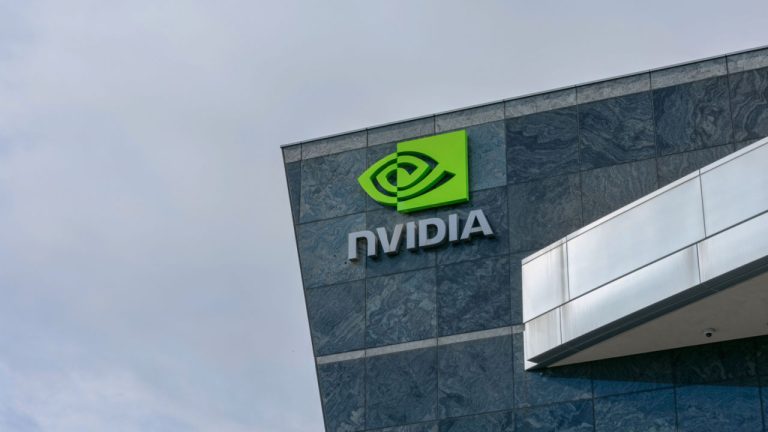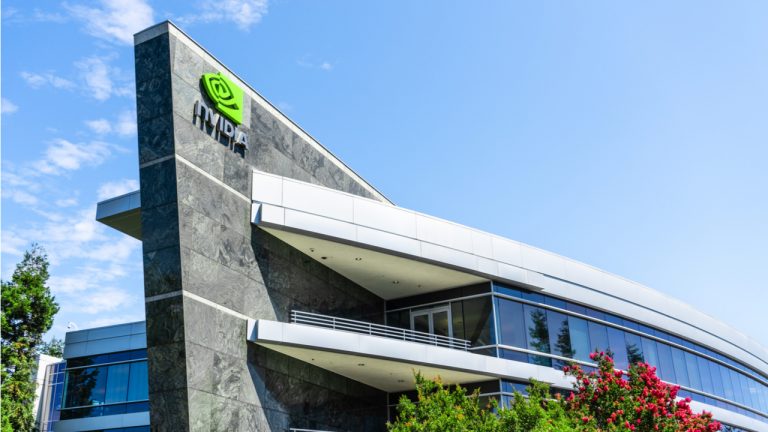 Unlike AI applications such as Chatgpt, cryptocurrencies do not bring “anything useful,” a top executive of U.S. chip maker Nvidia is convinced. The comment comes despite his company making significant sales in the space where its powerful processors are widely used to mint digital coins. Developing Chatbots More Worthwhile Than Crypto Mining, Nvidia Exec Claims […]
Unlike AI applications such as Chatgpt, cryptocurrencies do not bring “anything useful,” a top executive of U.S. chip maker Nvidia is convinced. The comment comes despite his company making significant sales in the space where its powerful processors are widely used to mint digital coins. Developing Chatbots More Worthwhile Than Crypto Mining, Nvidia Exec Claims […]
The U.S. Securities and Exchange Commission (SEC) is fining tech giant Nvidia for inadequately disclosing how much crypto mining directly impacted the company’s revenue stream. According to a recent statement released by the SEC, Nvidia failed to accurately divulge that crypto mining was critical to how much money they earned in the fiscal year of […]
The post SEC Fines Tech Giant Nvidia for Alleged ‘Inadequate Disclosures’ on Impact of Crypto Mining on Revenue appeared first on The Daily Hodl.

The hacking group is holding Nvidia to ransom demanding that it unlocks hash rate limiters on its high-end graphics cards.
A hacking group that infiltrated Nvidia servers last month is attempting to sell software that could unlock crypto mining hash rate limiters on the firm’s flagship graphics cards.
A South American hacking group going by the name LAPSUS$ claims to have stolen a terabyte of data from Nvidia servers in late February. The group is now offering software in the form of a customized driver to unlock limiters the company has put on its high-end graphics cards.
Nvidia stated that it became aware of the incident on Feb. 23, and stated, according to reports on Mar. 2:
“We are aware that the threat actor took employee credentials and some Nvidia proprietary information from our systems and has begun leaking it online.”
The cybercriminal group has been trying to extort the California-based company through a Telegram channel. In addition to leaking sensitive personal data that it pilfered, the group is offering to bypass limits on Nvidia’s RTX 3000 series graphics cards to enable higher hash rates for Ethereum mining.
On March 1, PCMag revealed screenshots from the group’s channel which stated “this leak contains source code and highly confidential/secret data from various parts of Nvidia GPU driver, Falcon, LHR, and such.”
LHR refers to “Lite Hash Rate” which is a limiter the company introduced to de-tune its GPUs in 2021 to deter crypto miners from snapping them all up, leaving some for its core market of PC gamers.
The hacking group is also attempting to hold Nvidia to ransom with demands that it remove the limiter from all RTX 3000 series cards and make drivers open-source. It has given the company until March 4 to make a decision.
Related: Nvidia again limiting crypto mining on its RTX-3060 gaming graphics card
Graphics card prices and availability has been a bane for gamers for the past two years, escalating their angst against crypto miners and the industry in general.
High-end GPUs can cost upwards of $1,800 if in stock, and lower-spec models are very hard to come by leading to the emergence of a used-card market where prices for older graphics cards often exceed what they cost originally in certain regions.

Mining Ethereum on a home PC can be done, but profits will be few and far between.
The Golem Network has launched an app that allows users to mine Ethereum on their laptops, but it could be a long time before riches can be reaped.
The decentralized computing resources sharing platform released the Thorg app that allows users to mine Ethereum on Windows-based PCs and laptops.
The app runs in the background and harnesses unused computing power to process the calculations required for proof-of-working mining. Users are rewarded in Golem’s native GLM token however, and not Ethereum.
The system runs on layer-two aggregator Polygon which alleviates any heavy transaction fees associated with the ERC-20 GLM token. It creates “shares” which are batched computing tasks that are collected and used to mine Ethereum.
Golem CEO, Piotr Janiuk, said that Thorg was designed to increase adoption of the Golem Network by allowing users to earn passive income on their own computers.
The minimum requirements for running the app are the Windows 10 operating system, and a 6 Gigabyte or greater graphics card, which only high-end gaming laptops will have.
Those thinking that this could be an easy way to make a mint by mining at home may have to think again. A 6GB graphics card will produce a hash rate of around 26 MH/s according to review websites. Taking this and average desktop PC power consumption of around 600 watts into consideration for a hypothetical example, profits from mining Ethereum on a PC could yield around $0.06 per day, or take more than a fortnight to make $1, according to mining calculators.
There are many variables, however, such as the specific computer hardware, power consumption, and cost of electricity, so this is just one theoretical example and results may vary.
Related: ETH mining still highly profitable despite upcoming Eth2 upgrade
The calculations also do not account for the cost of high-end graphics cards, which are extremely expensive at the moment due to the demand and global chip shortage. The announcement did state that a high-end GPU was not necessary for all users.
“In case you don’t have a high-end GPU, you can still use the Golem Network to compute tasks and earn GLM.”
At the time of writing, Golem’s native token was trading down 1.5% on the day at $0.475 according to CoinGecko. GLM is currently down 64% from its $1.32 all-time high in April 2018.

With Ether sinking below $2,000, the price of graphics cards has seen a further decline from June to July.
Graphics processing units (GPUs) have become a little cheaper in July amid a continued downtrend in the price of Ether (ETH).
According to a review by TechSpot, GPU prices across popular graphics cards are slightly lower in July than they were in June.
The lower prices in July are a continuation of the steady decline in GPU prices since the onset of the current crypto market downturn.
Indeed, with ETH tanking from over $4,000 in May to below $2,000, mining profitability has also tapered significantly. According to data from BitInfoCharts, Ether mining profitability is down about 80% from its May 2021 highs.
With Ether mining difficulty also down almost 8%, it appears GPU mining interest is also at a slower lower ebb. Overall, these factors could trigger decreased demand for already scarce graphic card hardware, to the benefit of non-crypto mining GPU users like gamers.
Surging demand by altcoin miners drove up the price of GPU miners with manufacturers forced to include hardware blocks to their graphics cards to limit performance as a means of discouraging miners.
GPU makers like Nvidia have also launched crypto mining-only graphic cards in an attempt to lessen the price burden on the rest of the PC hardware ecosystem.
TechSpot figures show a 16% average decrease in GPU price inflation from the manufacturer’s suggested retail price (MSRP) in June. As of the third week of July, several GPUs are already down by between $200 and $500.
However, despite the decline, GPU prices are still much higher than their respective MSRPs leading to average price inflation of 92% according to TechSpot figures. Indeed, the listed price of the GeForce RTX 3060 Ti at $1,012 is about 153% of its MSRP of $400.
Related: Nvidia GPU prices in China fall amid crypto mining crackdown
With GPUs still selling at almost twice the MSRP, gamers and other non-crypto mining members of the PC hardware ecosystem might still find their prices out of reach especially for brand-new GPUs.
In fact, the same situation also exists in the used GPU market with the current price drops is not enough to cause a significant decline in price inflation.
However, as previously reported by Cointelegraph, Nvidia GPU prices are down across Chinese e-commerce websites likely due to the crackdown on crypto mining activities in the country.
 With rising unemployment rates and rampant economic uncertainty, in the wake of the Covid crisis, a growing number of Brazilians are finding an alternative income source in cryptocurrency mining. GPU rigs have been spotted even in favelas as a relatively small investment can return more than the average salary in Brazil. Pandemic and Uncertainty Turn […]
With rising unemployment rates and rampant economic uncertainty, in the wake of the Covid crisis, a growing number of Brazilians are finding an alternative income source in cryptocurrency mining. GPU rigs have been spotted even in favelas as a relatively small investment can return more than the average salary in Brazil. Pandemic and Uncertainty Turn […] Graphics cards manufacturer Nvidia has earned $155 million in revenue from chips designed for cryptocurrency mining during the first fiscal quarter. The company admitted that crypto miners have also pushed sales up in the gaming products segment which remains its main market. Leading GPU Maker Reports Record High Video Card Sales Supported by Crypto Miners […]
Graphics cards manufacturer Nvidia has earned $155 million in revenue from chips designed for cryptocurrency mining during the first fiscal quarter. The company admitted that crypto miners have also pushed sales up in the gaming products segment which remains its main market. Leading GPU Maker Reports Record High Video Card Sales Supported by Crypto Miners […]